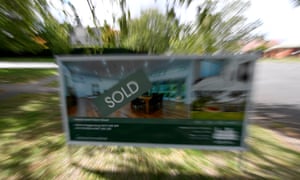Extract from The Guardian
Analysis shows richest individuals increasingly list property as only
source of wealth as disadvantaged face rising housing stress
The Greens senator Lee Rhiannon, who commissioned the analysis from the parliamentary library, said it showed a small, powerful group was making huge profits from the property market, while the disadvantaged experienced rising homelessness and housing stress.
“It’s going to become an issue that’s not just impacting on working class people, disadvantaged people, but increasingly hitting middle-class families, while the wealthy, the super wealthy, are doing very well,” Rhiannon said.
The analysis looked at 10 years worth of BRW Rich List entries, finding those who listed “property” as their only source of wealth has almost doubled.
Before-tax profits in the sector have increased every year since 2008-09, reaching $59.26bn in 2015-16.
The analysis also considered the revenue to state governments – focusing on the New South Wales government – from the housing market.
It found NSW revenue from land transfer-related taxes, such as stamp duty, had increased by almost $1bn every year since 2012-13.
In 2015-16, the state government earned $6.45bn in 207,463 separate land transfer-related transactions, the analysis said.
The parliamentary library attempted to estimate the amount of capital investment in social housing over a decade, but cautioned that obtaining complete and comparable figures was difficult. It said the total capital investment in NSW social housing in 2015-16 was about $542m, although that included federal funds.
“Its capital expenditure has been generally increasing in recent years, with the notable exception of the 2009–10 and 2010–11 financial years,” the analysis said.
A spokesman for the state’s social housing minister, Pru Goward, said NSW was embarking on the “biggest social housing building program in the country”.
That included an investment of $1.1bn in 2017-18 for support to homeless and social housing tenants, and a $22bn program to deliver 23,000 social and 500 affordable homes in the next 10 years.
“We are building more housing in mixed communities where social housing blends with private and affordable housing, close to shopping, transport and community facilities,” he said.
“This includes more social housing in mixed communities in areas like Macquarie Park, Waterloo, Riverwood, Arncliffe, Telopea and Redfern.”
The state government also used a social and affordable housing fund to commit to another 3,400 social and affordable homes across the state over the next four years.
But Rhiannon said a fundamentally different approach was needed to housing.
Instead of seeing housing as a commodity, governments needed to begin seeing it as a right for all.
“We’re not talking about the end of private housing market,” she said. “We’re talking about governments doing their job and resurrecting their housing policy so it addresses people’s needs.”
Homelessness in Australia continues to rise, despite national targets for its reduction.
The number of homeless Australians rose from 90,000 in 2006 to more than 105,000 in 2011, a 17.3% increase, despite a target reduction of 7%.
More than 1m lower income households are paying housing costs above 30% of their household income, the most commonly-used benchmark for affordability, according to the Australian Council of Social Service.
Last year, before the budget, Acoss and National Shelter urged the government to begin long-term housing affordability reforms, including setting new social housing targets, establishing a UK-style bond aggregator, boosting commonwealth rent assistance and giving funding certainty to homelessness services.
The government in response committed to working with state and territories to set housing supply targets under a new housing and homelessness agreement, while establishing a $1bn infrastructure facility to encourage “development in critical areas of undersupply”, and increasing the release of commonwealth land.

No comments:
Post a Comment